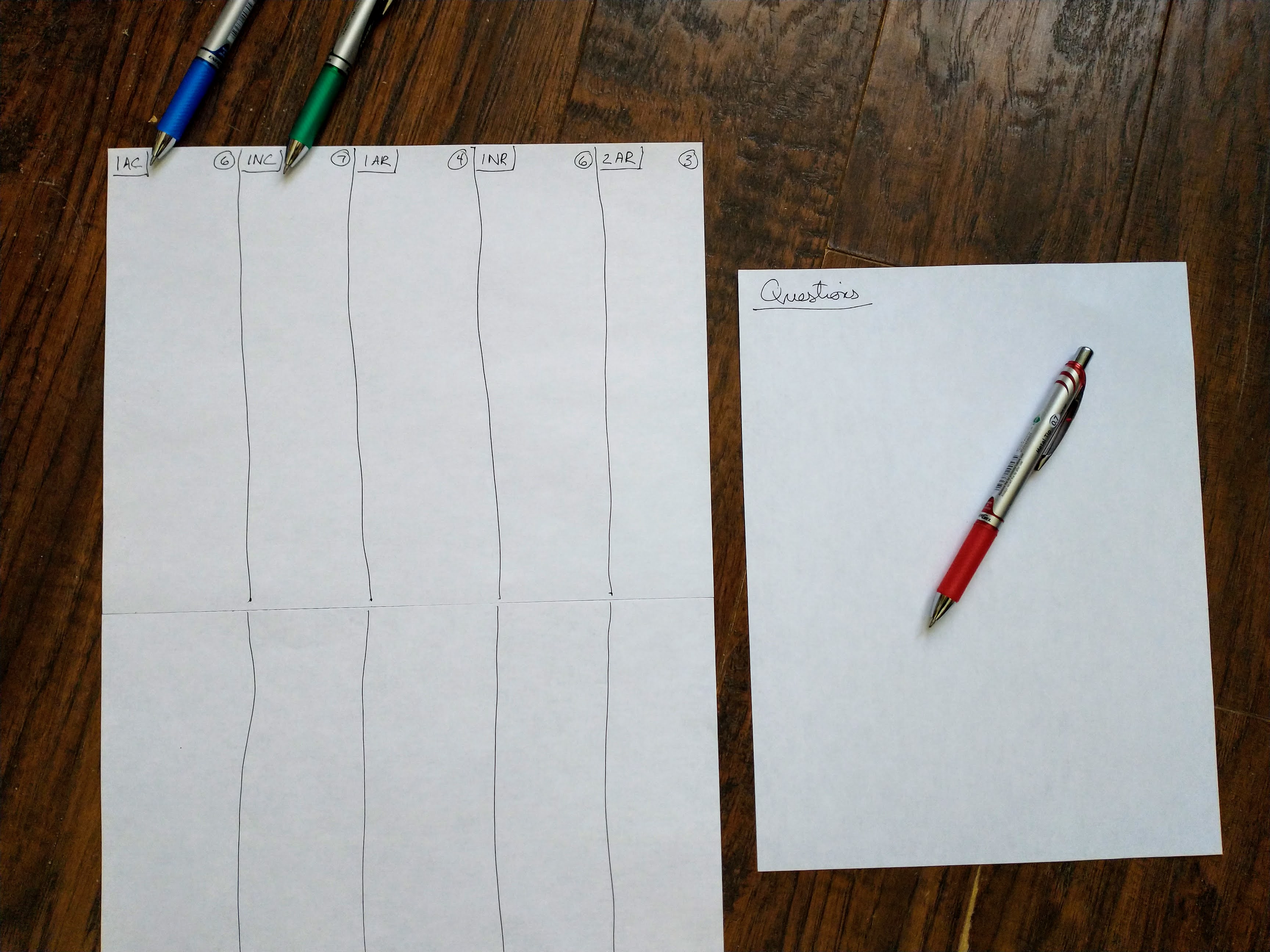Taking Notes in Debate
The process of taking notes in debate is known as flowing, as you’ll be tracing the flow of arguments throughout the debate. The following video gives you an idea of what it looks like in the context of Policy Debate, but the principles apply to the other forms of debate as well.
Supplies
The supplies you’ll need for flowing include:
Paper: Plenty of it, in pad or loose-leaf form. Legal size paper can be beneficial, as it gives you more space to work with.
Pens: At least two different colors (preferably three).
Setup
Before the debate begins, your setup will look something like the following:

Paper
To get yourself ready to flow a debate round, take at least two sheets of paper and divide them vertically into equal-sized columns for each of the speeches in the debate. Label these columns with an abbreviation for each speech (the boxes in the top-left of each column in the figure above). You may wish to include the time allotted to each speech as a reminder to yourself (the circles in the top-right of each column). This setup will vary slightly depending on the form of debate being used.
In addition to your two sheets of flow paper, set aside an additional sheet to jot down questions or other thoughts on. These notes won’t necessarily fit into the flow of the debate, but you’ll want to be able to remember them in cross-examination or in giving a speech later on. It will also be worth your while to jot down some generic questions before the debate begins, based on your knowledge of the subject area. This will make it such that you’re never trying (and failing) to think of a question on the spot during cross-examination.
Pens
Choose one color to represent the affirmative side of the debate, and another distinctly different color to represent the negative side. Flowing with two different colors makes it such that you can easily tell at a glance who said what.
The optional third color is for jotting questions and other thoughts on the piece of question paper set off to the side. Additionally, you can use it to make notations on the flow sheets (e.g., circle/box something, make an asterisk/star, etc.) to remind you of key things you want to bring up later (e.g., “make sure to press them on this point”).
Novice Flowing
If you’re relatively new to debate, your main task in flowing is going to be keeping track of the main points your opponent makes. These will be the claims made in their arguments, along with the tag lines for their pieces of evidence. During the first speech, jot these points down in the order in which they occur, leaving some space between them to potentially come back and fill in extra details later. In subsequent speeches, any given note should be taken to the right of the note to which it responds in the prior speech.
Tip
To save yourself time, and ensure you’re as prepared as possible, fill out the flow for your own cases ahead of time. That is, prepare flow sheets in advance, and fill in the details of your affirmative case on one, and the details of your negative case on another. This way you don’t need to take notes on your own cases during the round itself.
Advanced Flowing
Warning
This section will be completed at some point in the future.